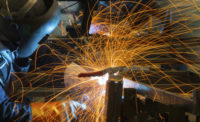 Workers who are concerned about being fired after an injury experience poorer return-to-work outcomes than workers without those worries, according to new studies from Massachusetts’ Workers Compensation Research Institute (WCRI).
Workers who are concerned about being fired after an injury experience poorer return-to-work outcomes than workers without those worries, according to new studies from Massachusetts’ Workers Compensation Research Institute (WCRI).
That finding was only one of the new predictors of worker outcomes identified in the research, which is intended to help public officials, payors, and health care providers improve the treatment and communication an injured worker receives after an injury – and improve outcomes.
Trust is important
Trust in the workplace turned out to be one of the more important predictors – and one that that has not been examined before. To describe the level of trust or mistrust in the work relationship, the studies' interviewers asked workers if they were concerned about being fired as a result of the injury. The following are some findings from the studies regarding this predictor:
One in five workers who were concerned about being fired reported that they were not working at the time of the interview. This was double the rate that was observed for workers without such concerns. Among workers who were not concerned about being fired, one in ten workers was not working at the time of the interview.
Concerns about being fired were associated with a four-week increase in the average duration of disability.
Existing health conditions factor in
The studies also identified workers with specific comorbid medical conditions (existing simultaneously with and usually independently of another medical condition) by asking whether the worker had received treatment for hypertension, diabetes, and heart problems. The medical condition may have been present at the time of the injury or may have manifested during the recovery period. Among those findings:
Workers with hypertension (when compared with workers without hypertension) had a 3 percentage point higher rate of not working at the time of the interview predominantly due to injury.
Workers with heart problems reported an 8 percentage point higher rate of not working at the time of interview predominantly due to injury and had disability duration that was four weeks longer.
Workers with diabetes had a 4 percentage point higher rate of not working at the time of the interview predominantly due to injury than workers without diabetes.
The survey range
The studies are based on telephone interviews with 3,200 injured workers across eight states. The eight states are Indiana, Massachusetts, Michigan, Minnesota, North Carolina, Pennsylvania, Virginia, and Wisconsin. The studies interviewed workers who suffered a work place injury in 2010 and received workers’ compensation income benefits. The surveys were conducted during February through June 2013—on average, about three years after these workers sustained their injuries.
“Better information about the predictors of poorer worker outcomes may allow payors and doctors to better target health care and return-to-work interventions to those most at risk,” said Dr. Richard Victor, WCRI’s executive director.
To purchase any one of these reports, visit the list of our most recently published studies: http://www.wcrinet.org/recent_pub.html.






